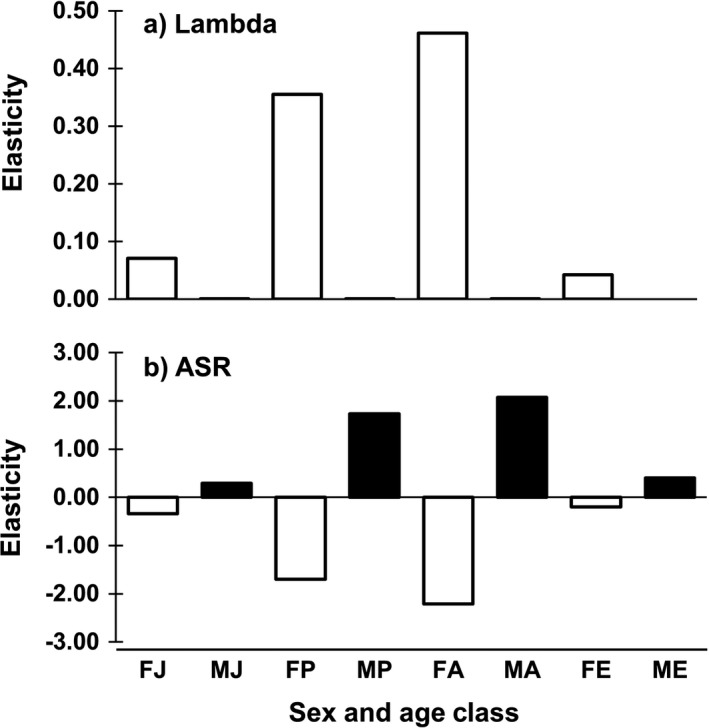Figure 6.

(a) The population growth rate of Magellanic Penguins showed the greatest elasticity to variation in female pre‐breeder and adult survival. Elasticity of lambda to male survival of all age classes was close to zero because of the colony's skewed sex ratio and the use of a dominance mating function. The first letter of the x‐axis category refers to sex (F, female; M, male) while the second letter refers to the age and breeding class (J, juvenile [fledging to age 1]; P, pre‐breeder [age 1–6 for females, age 1–7 for males]; A, adult breeder/non‐breeder [age 7–18 for females, age 8–18 for males]; E, elder breeder/non‐breeder [age ≥ 19]). (b) Like lambda, adult sex ratio (ASR) responded most strongly to changes in apparent survival of the pre‐breeder and adult age classes. However, because the juvenile age class showed the greatest sex bias, this age class made the greatest contribution to population declines and skewed adult sex ratio at the colony from 1990 to 2009.
